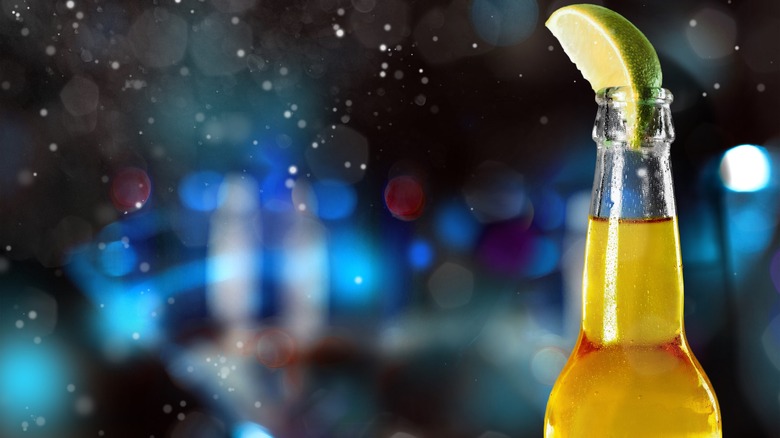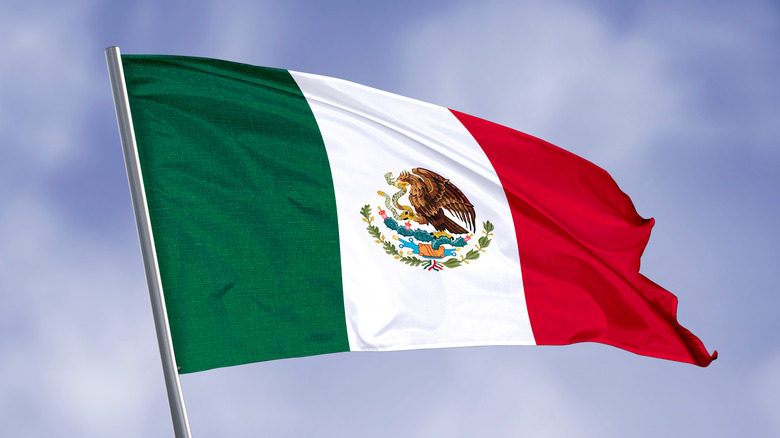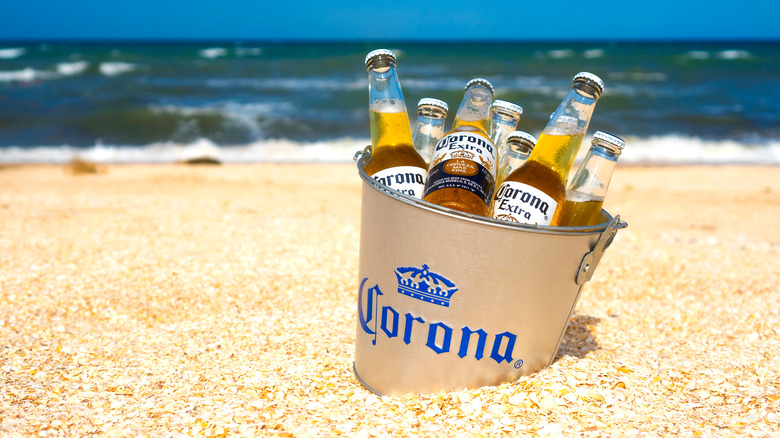How Beer Companies Turned Cinco De Mayo Into One Of America's Favorite Party Holidays
Every year on May 5, millions of people raise their glasses in the name of Mexico's independence from Spain ... but that's all wrong. Contrary to what many in the United States believe, Cinco de Mayo is not Mexican Independence Day. That would be September 16, the anniversary of el Grito de Dolores (the Cry of Dolores), a speech by Catholic priest Miguel Hidalgo y Costilla that galvanized the Mexican people into revolutionary action all the way back in 1810.
Cinco de Mayo commemorates a completely different war, one that occurred 60 years after el Grito de Dolores, and at this point, it's more of an American holiday than a Mexican one. In fact, Cinco de Mayo isn't even a federal holiday in Mexico, so how could it become such a big deal here, north of the border? You can point the finger at beer and tequila companies.
The real meaning of Cinco de Mayo
Cinco de Mayo commemorates the Battle of Puebla, which pitted Mexican troops against French invaders. In 1862, Mexico experienced a severe recession, so President Benito Juárez decided to temporarily halt the nation's payment of foreign debts to France. The French emperor, Napoleon III, responded by ordering a military invasion of Mexico. As the French army advanced toward the capital, it came upon the fortified city of Puebla de Los Angeles. Though outnumbered by the French roughly three-to-one, the people of Puebla were led to victory by General Ignacio Zaragoza and Brigadier General Porfirio Díaz (a future president of Mexico). French troops retreated after sustaining some 1,000 casualties, while the Mexicans who stood their ground suffered less than 100 losses.
The Battle of Puebla was an impressive show of courage by the Mexican people, but subsequent events would somewhat lessen its significance. In March 1863, less than a year after Cinco de Mayo, the French army returned and laid siege to the city of Puebla, ultimately forcing its people to surrender. The occupation lasted for four long years before Porfirio Díaz and his troops managed to beat back the French once more and liberate the city. In modern times, Cinco de Mayo is primarily celebrated in the state of Pueblo, where military parades and reenactments of the battle are held. However, it is not a big deal within Mexico as a whole, certainly not to the degree that it is in the U.S.
Corona changed Cinco de Mayo
Cinco de Mayo rose to prominence in the United States with the Chicano movement of the 1960s. For Mexican Americans, the holiday symbolized strength and solidarity, but there's even more to the story. Mexico's war with the French overlapped with the American Civil War, in which the Confederacy was backed by France (Europe had grown to rely on cotton from the Southern states). That backing was lost when Napoleon III decided to put his effort into invading Mexico, potentially influencing the Union victory. Thus, Cinco de Mayo represents a bridge between nations. From the 1960s through the '80s, the holiday grew in popularity, but it was largely confined to Mexican-American culture. The rest of the U.S. only picked up on it through beer advertisements.
In the '80s, both Anheuser-Busch and Miller started Hispanic Marketing divisions in an attempt to capture America's growing Latino consumer base and sponsored Cinco de Mayo parties to promote their products. Then, in 1989, the Gambrinus Group, American importers of Corona and Modelo, ran a Cinco de Mayo ad campaign. It proved to be a huge success, cementing a link between Cinco de Mayo and Corona beer that persists to this day. But other alcohol companies weren't going to miss out on this opportunity — particularly tequila brands, which latched onto the same themes of Mexican pride that Corona's ads did. Today, Americans consume more beer on Cinco de Mayo than on any other holiday, paired with more than 100 million liters of tequila.


